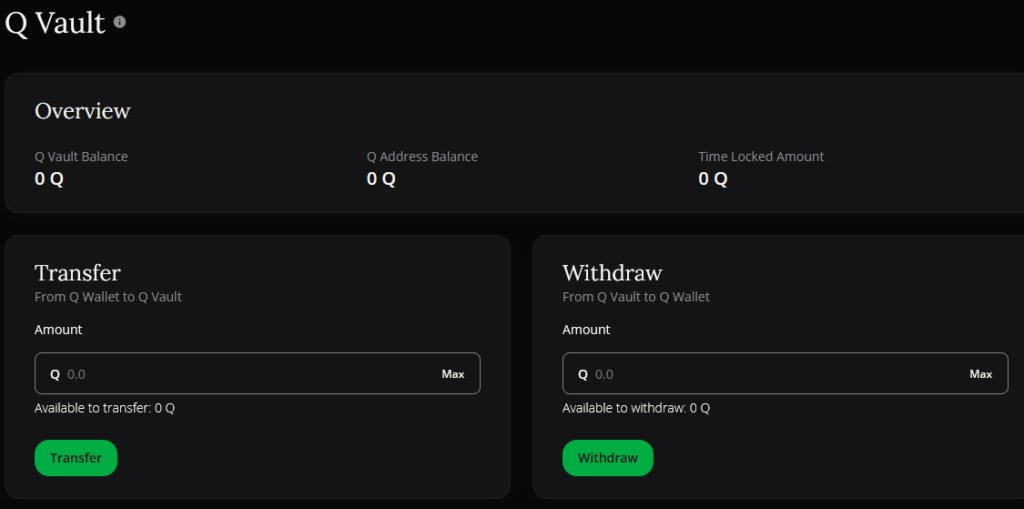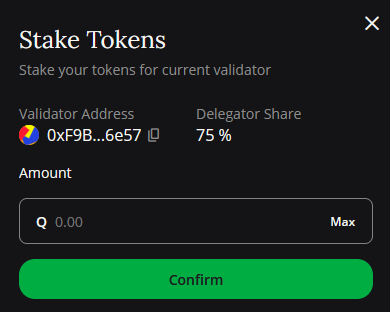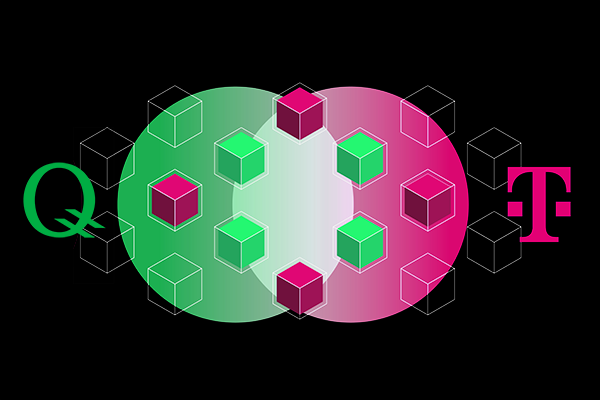Q is a decentralized governance layer for Web3. It introduces Shared Governance Security – a new key primitive previously missing in Web3. The technical foundation of the Q Protocol is an Ethereum Virtual Machine (EVM)-compatible delegated proof-of-stake blockchain. A set of governance smart contracts implement the protocol’s rules as laid down in the Q Constitution. Q seamlessly combines the openness and transparency of public ledgers with the enforceability of private contracts. Through this unique approach of combining blockchain technology and legal engineering, Q empowers builders in Web3 to move beyond the „code-is-law“ paradigm.
The Q Protocol is underpinned by three core principles:
- Constitutional Framework: A defined constitution establishes the system’s governing rules.
- Enforceable Architecture: The system employs both on-chain and off-chain mechanisms to ensure adherence to the rules.
- Dispute Resolution System: A dedicated mechanism exists to address and resolve potential conflicts.
| Token | QGOV |
| Mainnet launch | March 2022 |
| Supporters | Greenfield, Deutsche Telekom, HashKey, Boston University, Colombia University, University of Toulouse: Ecosystem overview at q.org -> chamber https://q.org/#chamber-section |
Problem:
Blockchains today provide security only for deterministic transactions that operate on a simple “if-this-then-that” logic. However, almost all high-value, sophisticated applications and business models require subjective decision making and human-centered governance. Without decentralized governance frameworks that support and secure these types of decisions, the growth of Web3 will be limited.
Solution:
Adoption of blockchain technology necessitates sophisticated governance and economic models. The Q Protocol offers a promising approach by ingeniously bridging the gap between public, decentralized ledgers and established legal systems. This innovative combination leverages the transparency and security of blockchain technology while incorporating well-tested governance concepts, fostering trust and facilitating broader adoption of blockchain technology. Q is the platform of choice for high-value, sophisticated applications, including Decentralized Finance (DeFi), Decentralized Autonomous Organizations (DAOs), Real-World Assets (RWAs) and many more.
Applications on Q:
Projects building on Q can be found under https://q.org/blog/q-development-ag-launches-innovative-platform-for-sustainable-ecosystem-growth
Step by Step Staking Guide
Disclaimer: This guide is a technical guide to a possible approach to the staking process and is not financial investment advice. Telekom MMS is not liable for any losses that may occur as a result of staking via the Q network or any other staking process.
1. First you need to own QGOV tokens. If you don’t already have QGOV tokens, you can get some via the mainnet faucet on faucet.q.org. . You can also obtain QGOV tokens via reward programs on https://rewards.qdev.li or get a 5QGOV welcome gift when bridging any asset to Q using https://bridge.q.org
2. Create or connect your MetaMask or Coinbase wallet: You can use the MetaMask or Coinbase wallet to stake your QGOV tokens. If you don’t have a wallet, you can create one using the the following links:
MetaMask
CoinbaseWallet
Find the onboarding guide at https://docs.q.org/five-minutes/
3. Transfer the QGOV tokens to your wallet. Visit the project dApp YourHQ at https://hq.q.org and deposit your QGOV tokens into the QVault. Note: make sure to keep some small amount for further transaction costs.

4. Visit the Staking section and select “Delegator staking” -> “Stake My Tokens”

5. Choose a staking provider: There are many different staking providers to choose from. Be sure to do your research and select a provider with a good reputation and good economic parameters. Find the list here.
6. Delegate your QGOV tokens to a validator node: Once your QGOV tokens are in your QVault, they can be delegated to a validator node. To do this, you will need the validator node’s address. You can find validator node addresses on the page mentioned before. If you want to stake with Telekom MMS, check out our validator here:
- Our public Validator Node address is 0xf9ba0e739623c2b6d0f50db1018a8ca382a26e57
7. Click the button “Stake” and input an amount. Click confirm.

Unstaking:
Simply repeat the staking process and insert an amount of “0” to end the delegation.
Further information:
- Press release: Deutsche Telekom provides secure infrastructure for blockchain network Q h
- Deutsche Telekom’s staking service

Gastautor: Jonathan Beyer, Werkstudent im Bereich Web3 Infrastructure & Solutions | Telekom MMS
Jonathan Beyer ist Werkstudent im Web3 Infrastructure & Solutions der Telekom MMS und unterstützt das Telekom Staking Team bei der Recherche und Analyse rund um das Thema Staking.

Maximilian Beyer, Product Owner | Telekom MMS
Maximilian Beyer is a product owner at the Web3 Infrastructure & Solutions of Telekom MMS. There, he and his team are responsible for building staking infrastructure for public blockchain networks. Before this, Maximilian gained many years of consulting experience in strategy and digitization projects, which he also uses today in projects in the area of blockchain and web3.
More about blockchain

Ob Digitalisierungsexpert*in, Werkstudent*in oder Schülerpraktikant*in – Hier berichten unsere Gastautoren aus ihrem Alltag.









